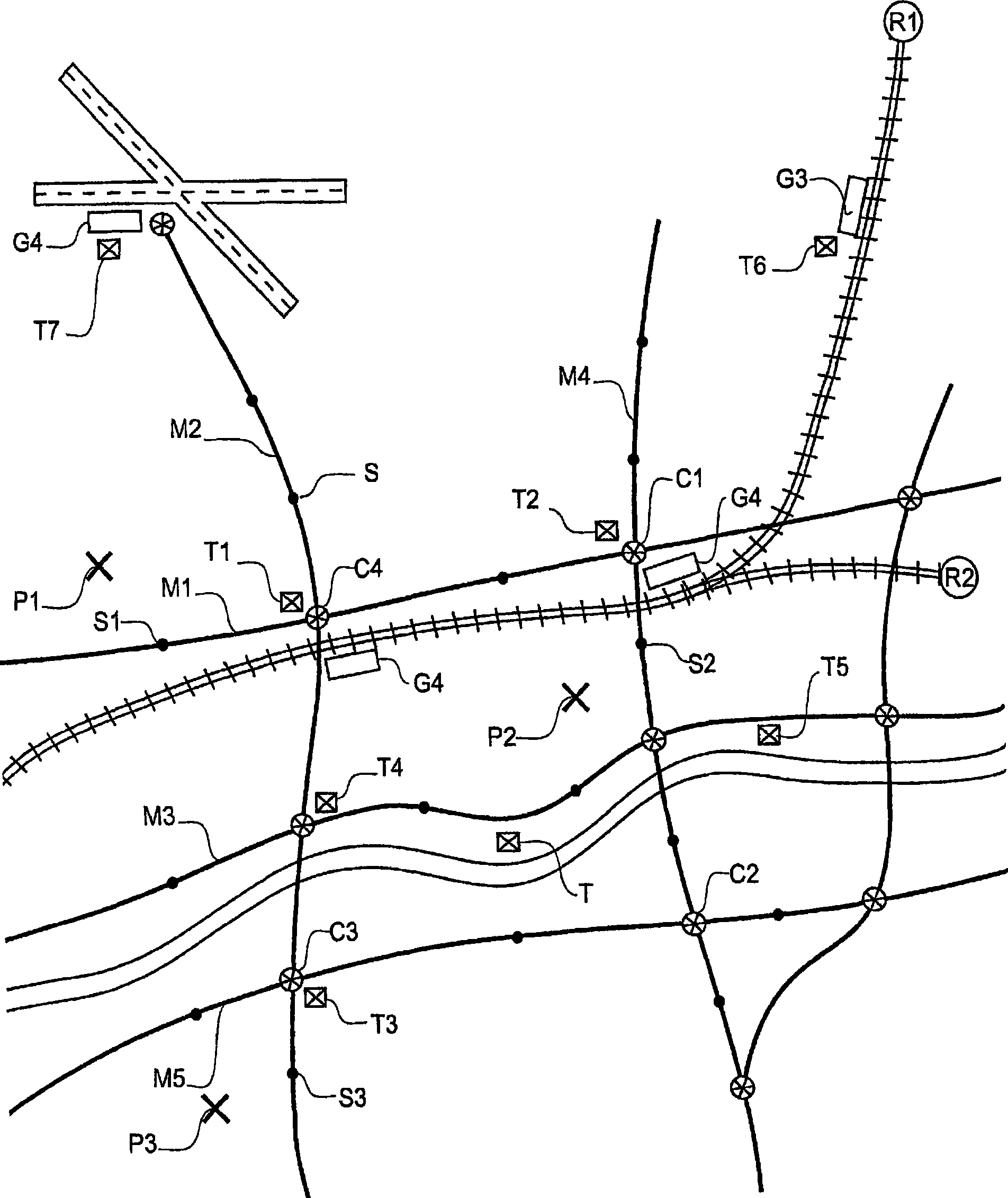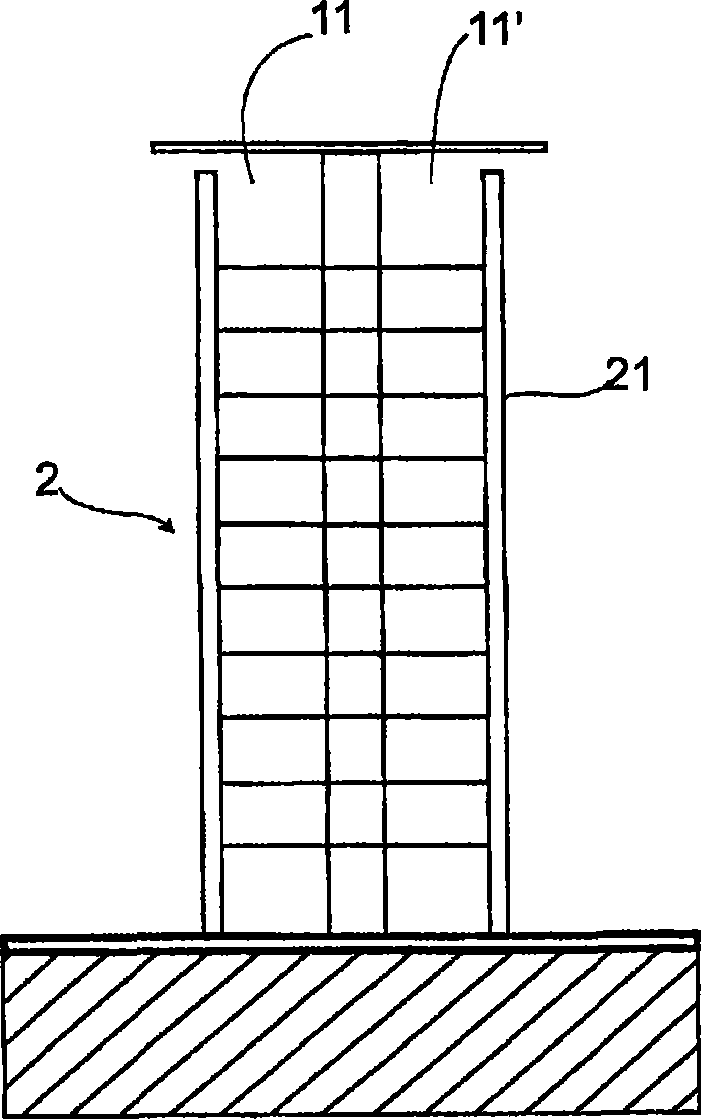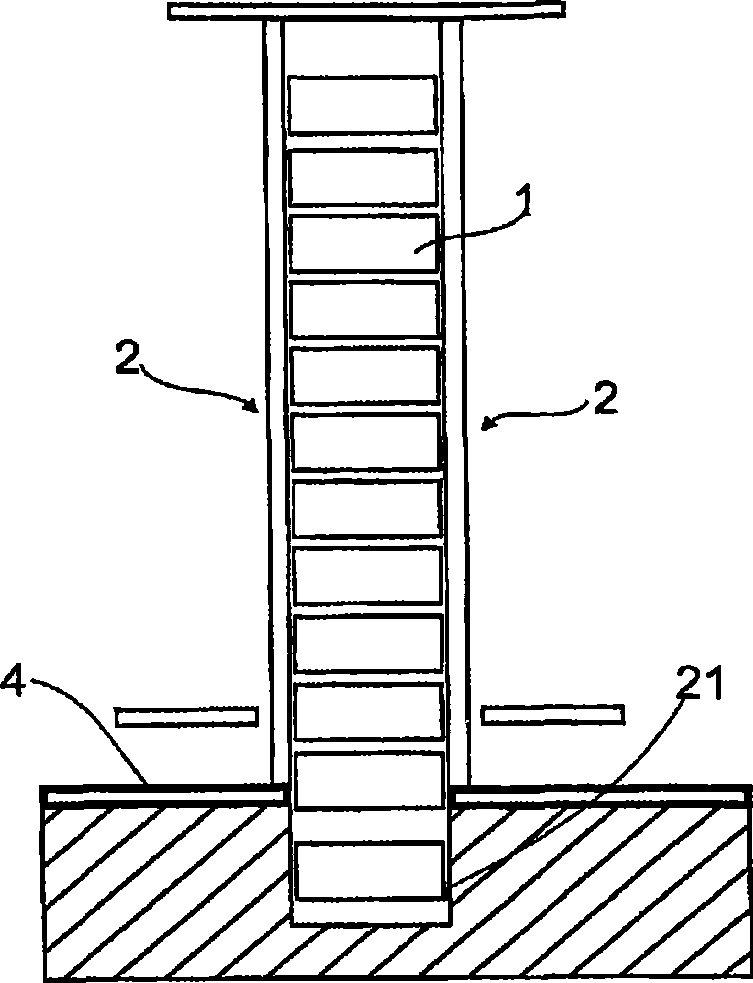Collective transport method and system
A traffic system and collective traffic technology, applied in traffic control systems, traffic control systems of road vehicles, data processing applications, etc., can solve problems such as long waiting times, and achieve the effect of eliminating traffic flow
- Summary
- Abstract
- Description
- Claims
- Application Information
AI Technical Summary
Problems solved by technology
Method used
Image
Examples
Embodiment Construction
[0055] figure 1 Schematically shows an example of an urban environment equipped with: a plurality of public transport networks, such as subway lines or surface lines M1, M2...Mi along which there are way stations S and transfer stations C; and commuter Railway lines R1, R2 have stations G1, G2.
[0056] According to this existing system, a user who is located at point P1 and wishes to use public transport to reach point P2 can walk to the nearest station S1 to take line M1, via this line to interchange station C1, and then take line M4 to reach point P2 The nearest station is station S2. If the user judges that the journey time is too long, he / she can call a taxi to go directly from P1 to P2, but the transportation cost is higher.
[0057] Furthermore, the same user after reaching point P2 may wish to travel to point P3, for example.
[0058] The distance between P2 and P3 is too far to reach on foot, so the user must return to line M4, station S2, change lines at interchan...
PUM
 Login to View More
Login to View More Abstract
Description
Claims
Application Information
 Login to View More
Login to View More - R&D
- Intellectual Property
- Life Sciences
- Materials
- Tech Scout
- Unparalleled Data Quality
- Higher Quality Content
- 60% Fewer Hallucinations
Browse by: Latest US Patents, China's latest patents, Technical Efficacy Thesaurus, Application Domain, Technology Topic, Popular Technical Reports.
© 2025 PatSnap. All rights reserved.Legal|Privacy policy|Modern Slavery Act Transparency Statement|Sitemap|About US| Contact US: help@patsnap.com



